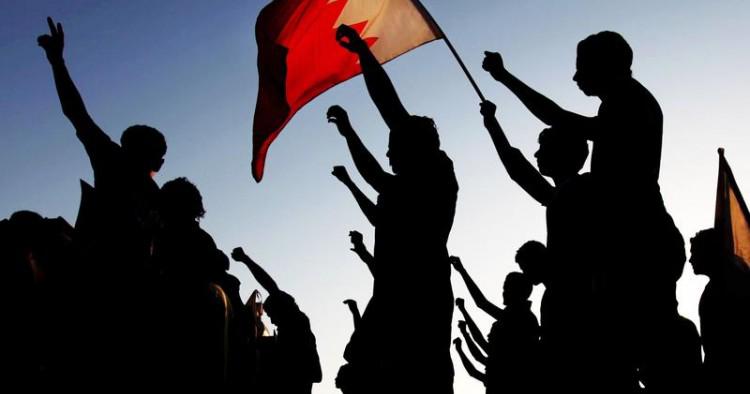Religious ‘Pluralism’ and Obscuring Sectarianism: Hegemony and Shi’a Invisibility in Bahrain
Jawad Fairooz, Andrew McIntosh
Presented at SEPAD: 10 Years On, at the University of Lancester 18/12/2020
Antonio Gramsci’s theory of hegemony refers to a sociological situation or ‘moment’ following a crisis of faith in the system, in which the philosophy and practice of a society fuse or are in equilibrium. It is an order in which a certain way of life and thought is dominant, in which one concept of reality is diffused throughout society by its institutional and private manifestations, such as domestic and international media, informing taste, morality, customs, religious and political principles, and social relations. He implied there is element of direction and control to this phenomenon, where dominant cultural forces attempt to selectively incorporate revolutionary ideas into themselves to control their narrative, and ultimately ensure their survival.(1) This means such narratives can be bifurcated or even fragmented, representing multiple ‘truths’, depending on the audience.
Over the past decade Bahrain has actively attempted to rehabilitate its image in the international sphere. Like the Kingdom of Saudi Arabia and the United Arab Emirates, Bahrain’s new image has involved the presentation of its liberalisation to international audiences. Liberalisation in Bahrain, like in its Gulf neighbours, implies a newfound openness to the rest of the world, particularly investors. This includes ostensibly promoting gender equality, anti-racism and religious tolerance to international audiences. Bahraini has made several major overtures about religious plurality and tolerance.
In April 2019, Bahraini media magnified several heavily publicised symbolic religious acts. It inaugurated the renovation of the 200-year-old Sree Krishna Temple, with Indian Prime Minister Narendra Modi in attendance. It has since become a locus of diplomacy between Bahrain and India. The largest church in the GCC is currently under construction in southern Manama. Estimated to have cost $30 million, it will serve as the headquarters of Catholic Church of the Northern Gulf. Shortly after Bahrain normalised relations with Israel, Manama’s previously disused Bahrain Synagogue had its first morning minyan in 70 years. After decades of neglect, the government is now partaking in the temple’s refurbishment, a development that has been circulated by pro-Saudi media outlets such as Al-Arabiya.
These restorations have accompanied an international charm offensive on social media, promoting Bahrain as a country that embraces religious plurality and tolerance. Such examples of this include MP and chair of CFC Council, Rehman Chisti praising Manama’s diverse sites of worship in 2018. His kind words, which claimed Bahrain is a country that allows people to practice their faith freely, were shared by the Bahraini Embassy in the UK on Twitter. These accounts, shared through official Gulf media sources and through state social media accounts are part of a greater post-2011 narrative constructed by Bahraini government and its allies, which depicts the nation as modern, cosmopolitan, tolerant and diverse to audiences abroad. That narrative is also overtly exclusionary of Bahrain’s Shi’a population, who have been omitted from the discourse of religious plurality and remain targets of sectarian state policies and hate speech. These narratives are not merely a vehicle of discrimination and censorship but are part of the cultural hegemony that has emerged in the aftermath of the failed 2011-Uprising, which culminated in the retaliatory destruction of Shi’a mosques and shrines and policing of Shi’a neighbourhoods.
The Pearl Uprising of the 2011 attracted both Shi’a and Sunni Bahrainis, who were united by dissatisfaction with a lack of democratic representation and gross inequality between the royal family and the rest the Bahraini population. Being a nation that has long utilised racism and sectarianism as a divide and rule tactic, the prospect of mass protests using the slogan “Not Shi’a, not Sunni, Bahraini” posed a significant symbolic threat to the hegemony of minority rule established and maintained by the Sunni Arab Al-Khalifa regime.
After the protests were violently suppressed and political opposition banned, Bahrain constructed a new hegemony that reaffirms a culture of religious inclusion and tolerance but also reinforces Sunni Arab primacy – the identity of the royal family and government – as the cultural ‘norm’ whilst heavily regulating Shi’a activities on the island.
In the immediate aftermath of the 2011 protests, security forces damaged or destroyed at least 53 Shi’a mosques and religious institutions. Of these, at least 28 were entirely demolished. This included locations of great religious significance to Shi’a Bahrainis, such as the 400-year-old Sheikh Mohammed Al-Barbaghi Mosque, and the shrine to Sa’sa’ bin Sohan, the revered companion to Ali. As of present, the government has failed to fully rectify this. Numerous holy sites either have not been rebuilt or have been rebuilt in new locations that obstruct them from public view, as representations of Shi’a Islam has increasing been subject to government control.
Since 2011, the Bahraini government has sought to regulate Shi’a community leadership. Government-run television stations do not broadcast Friday sermons from Shi’a mosques, whilst sermons from Sunni mosques appear regularly on these channels. Currently, the only Shi’a organisation permitted is the Jaafari Shiite Endowment Administration, which is directly run by Ministry of Justice and Islamic Affairs, with its board members appointed by Royal Decree. In June 2014, the government dissolved the Islamic Awareness Society and the Clerics Council. Police summons have also been sent out to Shi’a clerics who led these institutions. They were charged with infractions such as raising money without a licence. From 2011-2017, 73 Shi’a religious scholars were arrested, 60 within a period of two months. In custody, clerics have had their faith insulted, been verbally abused and psychologically and physically tortured to force confessions.
From 2011-2017, 5 Shi’a clerics have been banned from preaching, 19 have had their nationalities revoked, 37 have been imprisoned – 8 of which were given life sentences – and 3 have been sentenced to death in absentia. Shi’a religious figures who are permitted to preach are supervised by the state, being required to provide their sermons to government handlers in advance. Events that are viewed as ‘spontaneous’ or difficult to control, such as funerals and Ashura, have been repeatedly suppressed.
This past year, attempts were made to prevent the opening of Hussainiyat, threats were made to block funeral processions, public signage of Ashura was removed, and successive summons were made by the police to preachers, reciters, and chanters of Ashura lamentations. Additionally, several mosques and Hussainiyat were closed. The official reason given was to prevent the spread of Covid-19, yet gyms, outdoor fields, and swimming pools were re-opened during this same period. The Head of the Supreme Council of Health, Mohamed Bin Abdullah Al Khalifa, regulated the duration of the live sermon to 20 minutes. Funeral processions, visitations and banquet spreads were prevented. Moreover, Shi’a who partook in processions were widely vilified in the Bahraini press and on social media as backwards or zealous ‘spreaders’ of the pandemic. That narrative was intended for domestic audiences.
From an outside perspective, this considerable contrast between Bahrain’s international image of religious tolerance abroad and the heavy-handed regulation of its Shi’a population at home can be viewed as inconsistent or hypocritical, but this duality serves a purpose. These narratives, in which Bahrain depicts itself as a beacon of religious tolerance whilst sectarian policing becomes more prolific, constructing a hegemony in which the Bahraini state has deployed institutions of its civil society to create a new post-2011 consensus. It is a hegemony in which the new, post-uprising Bahrain has assimilated egalitarian slogans of the 2011 Uprising and placed them under the authority of the Al Khalifa, whilst the country’s Shi’a majority are selectively vilified as disloyal and dangerous. Thus, the edifices of their belief and culture are hidden from the world and slowly erased from Bahrain’s story and memory.
It is, however, a tactic that will likely fail long-term. Political discontent in Bahrain, which transcends sectarian divisions always re-emerges. Whilst the regime hopes to shape false narratives that assuage international investors and divide the populace, only equal representation and democratic collaboration between Bahraini’s diverse peoples has the power transform the island’s international fiction into a reality Bahrainis can be proud of.
1- Gwyn A. Williams, ‘The Concept of “Egemonia” in the Thoughts of Antonio Gramsci: Some Notes on Interpretation’, Antonio Gramsci: Critical Assessments of Leading Political Philosophers, Vol II, Ed. James Martin, (London: 2002), p 230.


 العربية
العربية Français
Français Deutsch
Deutsch